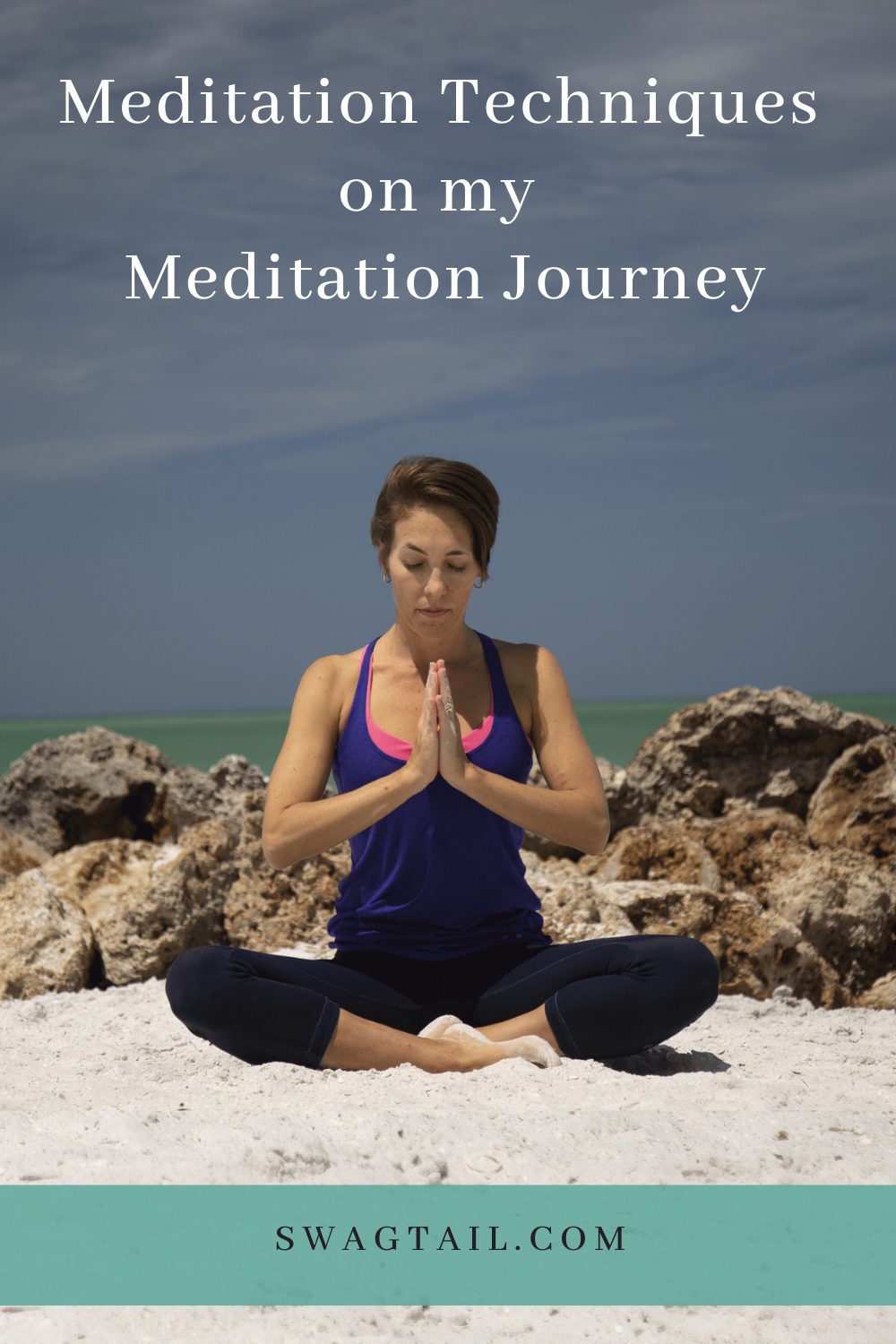 Yoga originated as a pathway to reach your potential. It’s a gateway to connect with your spiritual essence. Yogis called this Samadhi. Athletes call this the zone. You can reach this elevated state via physical postures and breathing techniques. Meditation works too and this article shares how various meditation techniques helped me achieve a greater sense of calm, focus, and joy in my life.
Yoga originated as a pathway to reach your potential. It’s a gateway to connect with your spiritual essence. Yogis called this Samadhi. Athletes call this the zone. You can reach this elevated state via physical postures and breathing techniques. Meditation works too and this article shares how various meditation techniques helped me achieve a greater sense of calm, focus, and joy in my life.
I’m an adventuresome spirit. I like the possibilities of open roads, which is why I thrive numerous months each year living in our van. Change excites me and I’m far more resistant to routines than diving into the unknown.
Last week I told you about my spontaneous leap into a 10-day silent meditation retreat without doing any research about the program first. Then, three days into the set schedule of waking before sunrise, sitting for hours on end, and listening only to the crazy rambling in my head, I was more-than-ready to leave.
Learning is new and exciting to me. Repetition of that knowledge can be boring.
This is even true of yoga and meditation, despite both having spiritual roots. Each requires you to show up, do the work, and internalize the skills. You teach your brain to fire in new ways—adding difficulty gives you the motivation to stick with the practice. The secret is to find the sweet spot of challenge. I’ll show you how in this post.
Photo Credit: Ember and Earth Photography
WHY MEDITATION
One of my favorite quotes by Dr. Joe Dispenza says that “If you understand WHAT you’re doing and WHY you’re doing it, the HOW gets much easier because you can assign meaning to what you’re doing.”
So why meditate?
On a simple level, meditation has numerous physical and mental benefits. This includes:
- Greater health
- More balance
- A boost in creativity
- More harmony within yourself, and in your relationships
- Greater self-trust
- Enhanced focus
- Higher energy levels and lower stress levels
- Greater satisfaction with life as a whole
Unexpected Benefits of Meditation
My 10-day introduction to Vipassana meditation didn’t solve all of my problems. Instead, it gave me the courage to face them. At that time, I was unemployed and unsure about my future.
I was able to shamelessly ask my mom to take me in (which would have gutted my pride in the past). And instead of trying to plan out the rest of my life, I calmly focused on my next step. This meant traveling back to Chico to reclaim my possessions from a friend’s garage.
Little did I know I would meet my soulmate, Stephen Thompson, and end up still married to him twelve years later.
What still makes me smile is how his spiritual journey fueled my love of meditation. He, too, loved to sit in stillness and we often did so together in the dark hours of the morning.
Since then, some of his favorite meditation techniques have also become my own.

Photo Credit: Diane Nicole Photography
Meditation also helps you reach Samadhi
This is a state where the thought and thinker dissolve into one. It’s where action and awareness merge to generate an experience far beyond our normal selves. The Greeks called this Ecstasis. Athletes call it the flow state. You experience this on your yoga mat when transitions are effortless or you can sense yourself completely relaxed in Savasana.
The great news is that while you can’t always predict the moment you’ll land in the zone, you can prepare yourself mentally and physically to be there more often. Various meditation techniques show you how.
3 CATEGORIES OF MEDITATION
If you do an online search for meditation styles, you will uncover articles that claim there are 7, 9, 12, 23 or more types to try. I like things simple, so consider that there are really only three basic categories of meditation:
Passive Meditation: This style of meditation is probably what you envision first when healing about the practice, and as the name implies, you remain passive in the process. Thoughts, emotions and body sensations rise to your attention from the depths of your subconscious and you simply observe them. You allow them to unfold naturally.
 Guided Meditation utilizes the voice of a teacher to help you stay focused in the present moment. You might also refer to this style as guided imagery or visualization.
Guided Meditation utilizes the voice of a teacher to help you stay focused in the present moment. You might also refer to this style as guided imagery or visualization.
Active Meditation: This type of meditation uses physical movements of the body to focus the mind. You’ve likely heard of walking meditations, which fall into this category. Thai Chi and yoga do, too.
Body Positions for Meditation
Passive and guided meditations can be done from a seated or supine position. You can also do them standing as well. The active meditations can involve numerous forms of movement. For example, you often hear of a runner’s high in which the repetitive gait elevates the activity of running into one of meditation.
MEDITATION TECHNIQUES
There are numerous meditation techniques that fall into one of the three broad categories mentioned above. Here are just a few that I’ve enjoyed over the past two decades:
My passive meditation practice today still reflects my Vipassana roots. I get up between 4:30 and 5:00 am while my house is still dark and quiet. I can hear Steve breathing deeply and Kai–our English staffy–snoring next to him on the bed, too. Then with my cool glass of water and cozy bamboo blanket in hand, I retreat to my yoga room.
I close my eyes and focus on my breathing. Sometimes I listen to the heart beating in my chest. Other times I place my attention on the air flowing through the HVAC system or the hum of the low refrigerator down the hall.
Many times, though, I thrive on guided meditations.
One of my first experiences with this meditation technique was via HeartMath. On a simple level, you focus on the space around your heart and pair that awareness with an elevated emotion to generate heart coherence. Check out my interview with Executive VP of Heartmath, Howard Martin, in our Awaken your Potential online workshop.
What is heart coherence?
It’s when the waves of the heart synchronize into a smooth, even, and orderly pattern. When you’re in heart coherence, you waste no energy. Your heart, respiration, and blood pressure systems–just to name a few–synchronize and allow you to perform at an optimal level.

Dr. Joe Dispenza has worked closely with HeartMath over the years. And thanks to his body of scientific research, he uncovers the power of heart and brain coherence. His books, Breaking the Habit of Being Yourself and Becoming Supernatural, introduce you to his guided meditation techniques.
Guided meditations are commonly used to explore your inner world more deeply. My husband frequently led a meditation to create a sacred space for yourself–one you could revisit any time life seemed to get out of control or you simply wanted insight from your Higher Self.
Spotlighting is another guided meditation technique to meet your spiritual guides or angels, and then communicate with them on a vibrational level. I often meet them in the sacred space I created in the meditation above and I definitely set up a filter before this process to ensure I connect with those in the highest vibration possible. The book Ask your Guides is a great resource on this.
A Note on Journeying
Journeying is also a fun guided meditation technique that some Native Americans tribes have used to connect you with your spirit animal. Animal Speak is one of my favorite books if you’re interested in this subject.
I’ve done this without any psychedelic aids. Yet you might be familiar with substances such as Ayahuasca, peyote, and opium as a way to transport the mind from a subconscious to superconscious level. The book Stealing Fire talks in depth about the history and benefits of this if you want to learn more.
Music as your Guide
Music can be one of the most satisfying meditation techniques to alter your consciousness. Over ten years ago, I attended my first Kirtan. It was held at a dimly-lit hotel ballroom near the LAX airport (a far cry from the mystical Ashram I envisioned, and with the help of soft orange uplighting, I was able to navigate the overly-packed room and find a seat.
Kirtan is a call-and-response style of chanting set to music. The melodious voices in Sanskrit led the way. Then the entire room followed their lead. The sheer volume of such devotion made me physically jump at first. I was also nervous about singing off-key. Within a few rounds of the chorus, though, I felt right at home and my spirits soared.
If you haven’t tried Kirtan, I highly recommend listening to Krishna Das, Snatam Kaur, or Deva Premal.
I’m also a huge fan of gong baths, although this may fall more under the passive category of meditation instead of guided. Think of this like a Savasana with sound. You get entirely comfortable on your yoga mat while a musician plays an array of gongs, singing bowls, tingshas, and other instruments to elevate your consciousness.
Keep in mind two important things if you attend a gong bath near you. First, I suggest you bundle up. Bring socks, layers, and even a blanket (or two). Since you’re not moving, it can be easy for your body temperature to drop and you want to ensure you stay comfortable throughout the experience.
Second, a gong bath plays a variety of sounds. The music won’t always reflect a soothing melody similar to music you’d hear while getting a massage. In fact, gongs can be played quite loudly at times (although they usually amplify the sound in a progressive way that doesn’t catch you off-guard). I share this so you’re not surprised or scared when this happens. And you can observe how the vibrations of such instruments shake loose any mental or physical tension you might be holding.
Learn more about Gong Baths in my interview with Richard Rudis here.
Photo Credit: Manja Vitolik
TIPS TO STICK WITH A MEDITATION PRACTICE
According to Steven Pressfield, author of The War of Art, “resistance is the negative force that stands in the way of living your best life.” Resistance can appear as gravity, which makes it more challenging to hold a balancing pose on the yoga mat. Or it might be a self-defeating thought that prevents you from starting–or sustaining–a meditation practice. Here are three tips you can use right now to overcome resistance and stick with meditation long-term:
(1) Try various techniques
If you’re like me, you know that there is a style of yoga that will meet any person where they’re at. As a teacher, my goal is to help students find that perfect match. Sometimes my classes are a fit for others. Many times I have to refer them to nearby studios.
Meditation is the same way. You’re a unique person with specific talents, interests, and commitments in your life. You want to find a meditation technique that works for you now.
So try out numerous styles. Play around with various techniques and teachers. Find some meditation techniques that you like and get good at them. Then, be willing to adapt as you change, for the skills you learn now can become just one of the many resources in your toolbox to stay balanced in body and mind.
In the 3H Project, we use guided pranayama to awaken body sensations. We also use visualization exercises to improve your creative abilities and we tap into looping exercises to align your internal energy.
(2) Find the Sweet Spot of Challenge
Atomic Habits is one of my all-time favorite books. In it, James Clear reveals that you can best stay in the flow when you engage in a task that is roughly 4 percent beyond your current ability level.
For example, if you don’t meditate now, sitting in stillness for 5 minutes might be the sweet spot of challenge for you. If you’re familiar with 15-minute guided meditations, maybe you increase the amount of time you practice. Or you could try a new guided meditation technique entirely. Perhaps you’re a long-time meditator and you actually attend a 3- or 10-day silent retreat.
You can improve in endless ways, and you can do so in ways that don’t cause overwhelm, frustration, or added stress.
(3) Enlist a friend
Meditation is a solitary practice, yet you might enjoy it more in the company of others. This could be attending a meditation class in your area. It might mean you attend a virtual class, like our 3H Project, and stay motivated in the practice just knowing others around the globe are doing it with you, you. You might enlist a close friend to do both with you. Sharing your experiences in the safety of a community can enhance your learning along the way, too.
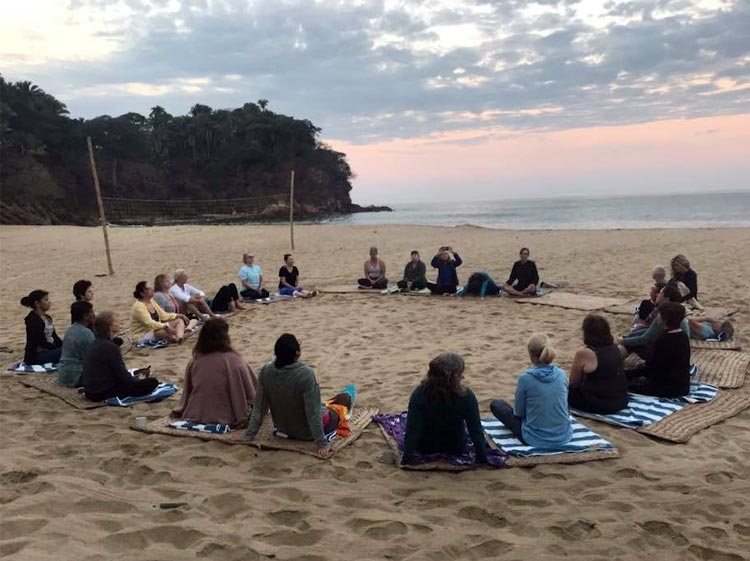
PUTTING IT TOGETHER
My meditation journey, like that of my broader yoga path, has taken many turns over the years. Some periods were long and stable. Others engulfed rapid changes and quick sprints. No matter what the pace or circumstance, I was always able to find a meditation technique that kept me motivated to practice. You can experiment with these various methods to find one that works for you.
Take Action Now:
- Create your sacred space with the free meditation above.
- Check out any of the books or audios in this article. They can be great ways to stay motivated as your meditation practice.
- Join us in the 3H Project: A step-by-step program that teaches meditation basics.



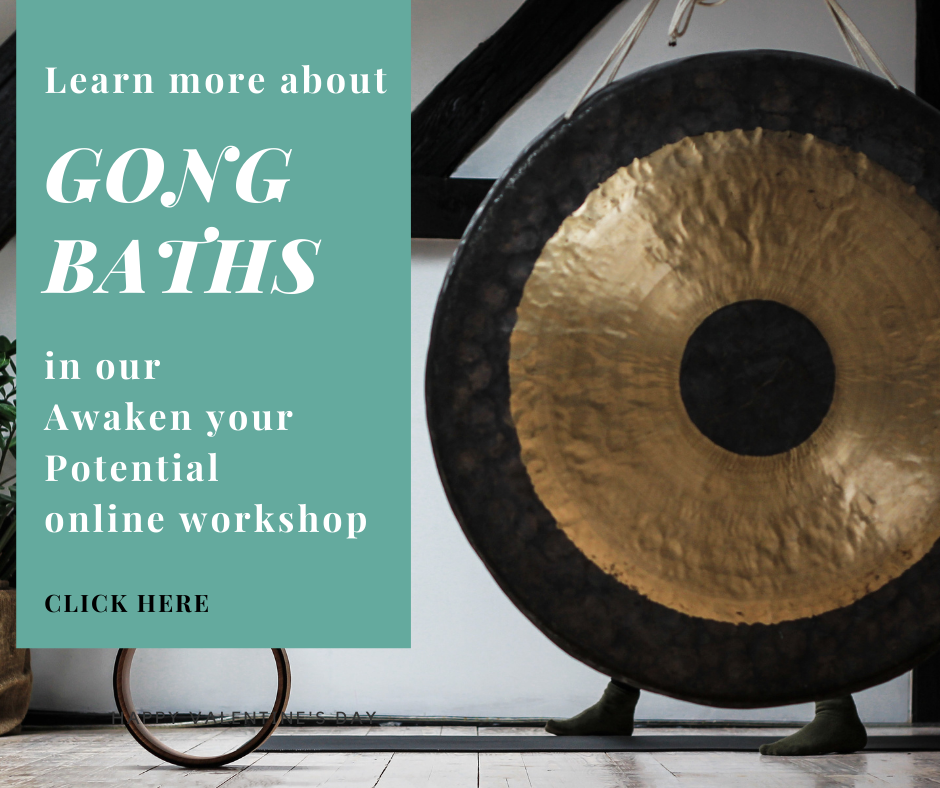


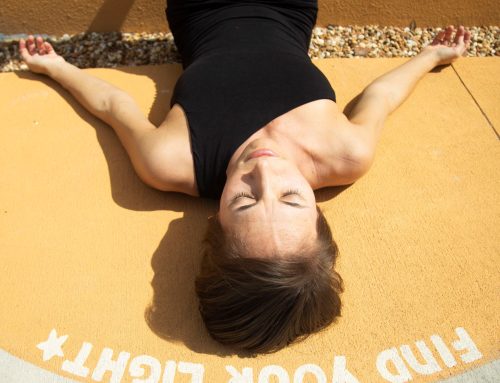

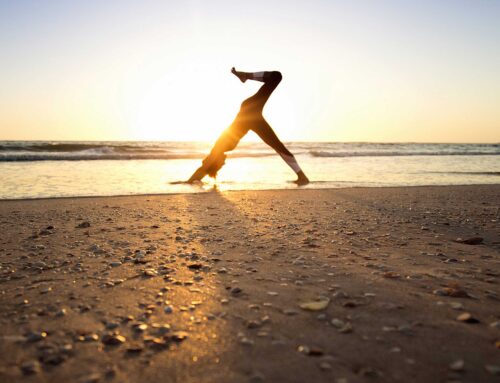

Leave A Comment